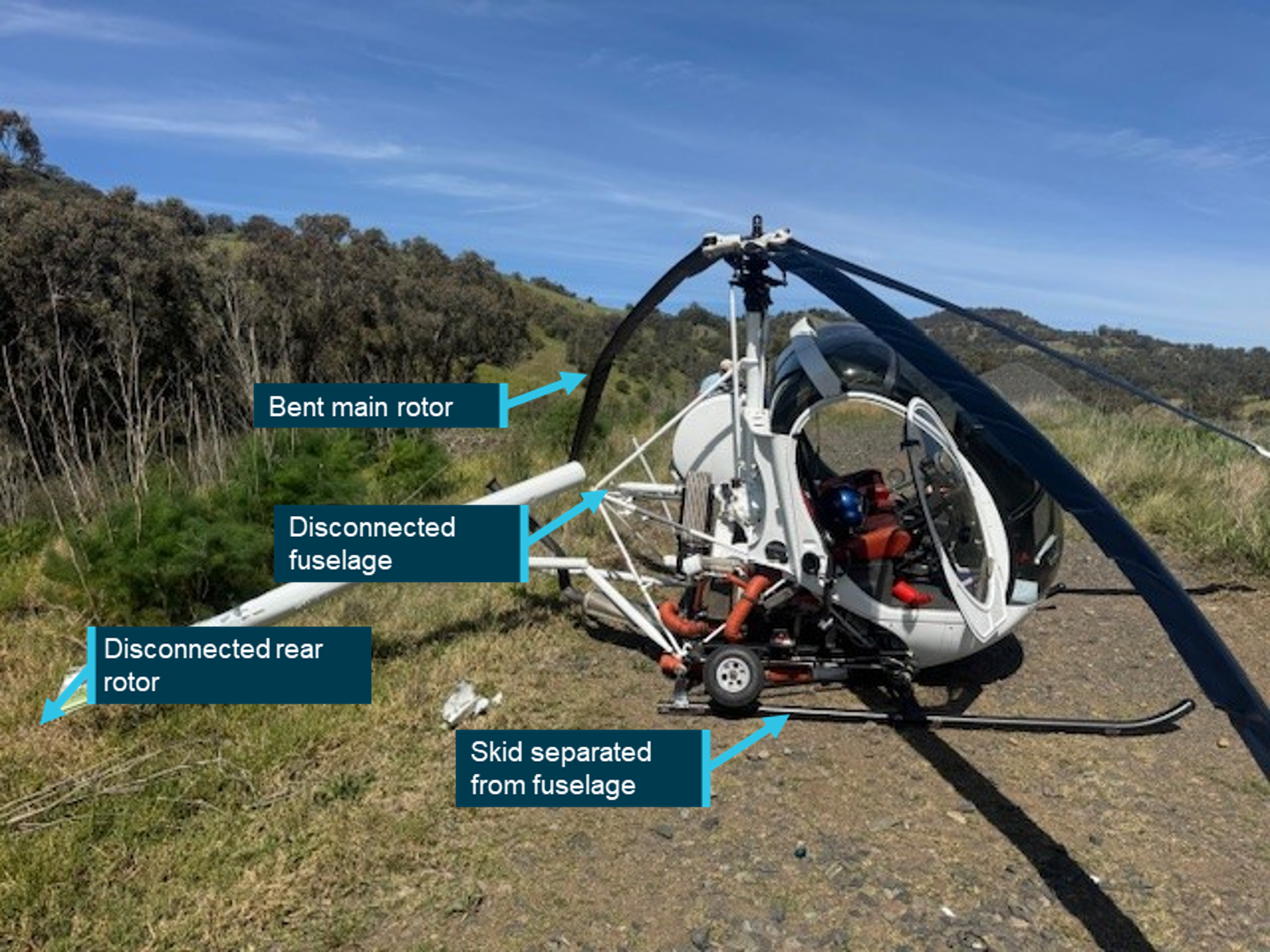What happened
On 5 October 2025, the pilot of a Schweizer Aircraft Corp 269C-1 planned a ferry flight from Lake Macquarie Airport (where the helicopter had just received an annual service) to a landing area near Duri, New South Wales.
The pilot’s usual procedure was to conduct a pre-flight inspection of the helicopter prior to departure which included confirming the amount of fuel in the fuel tank with a dipstick. On this occasion, however, the pilot recalled observing the calibrated amount of fuel inside the tanks to be 92 litres. Assuming this amount was correct, the pilot was satisfied with the fuel quantity and proceeded to collect their passenger from the taxiway. Shortly after, the helicopter departed from runway 25.
En route to the arranged helicopter landing area about 1.7 hours away, the pilot observed a different fuel burn rate to the calculations that were initially completed. Due to the distance left to travel, the pilot advised the passenger that there would be a precautionary landing conducted to inspect the fuel tank further. The pilot selected a suitable landing area and began to configure the helicopter for landing. However, at 2,500 ft, the engine stopped producing power due to fuel exhaustion and the pilot conducted an autorotation[1] to land at a track beside a train line. The helicopter landed hard, resulting in substantial damage to the skids, rotor blades and tail boom (Figure 1).
Figure 1: Damage to helicopter

Source: Pilot, annotated by the ATSB
Safety message
Pilots are reminded to always check the fuel quantity prior to departure using a known calibrated instrument such as a dipstick.
Pilots are also encouraged to use at least 2 independent verification methods to determine the quantity of fuel on board the aircraft. The Civil Aviation Safety Authority (CASA) advisory publication, CAAP-234-1 Guidelines for aircraft fuel, provides guidance for fuel quantity crosschecking. More specifically, the advisory circular published by CASA, AC 91-15 v 1.2 - Guidelines for aircraft fuel requirements, highlights the importance of pre-flight fuel quantity checks and in-flight fuel management.
About this report
Decisions regarding whether to conduct an investigation, and the scope of an investigation, are based on many factors, including the level of safety benefit likely to be obtained from an investigation. For this occurrence, no investigation has been conducted and the ATSB did not verify the accuracy of the information. A brief description has been written using information supplied in the notification and any follow-up information in order to produce a short summary report, and allow for greater industry awareness of potential safety issues and possible safety actions.
[1] Autorotation is a condition of descending flight where, following engine failure or deliberate disengagement, the rotor blades are driven solely by aerodynamic forces resulting from rate of descent airflow through the rotor. The rate of descent is determined mainly by airspeed.


